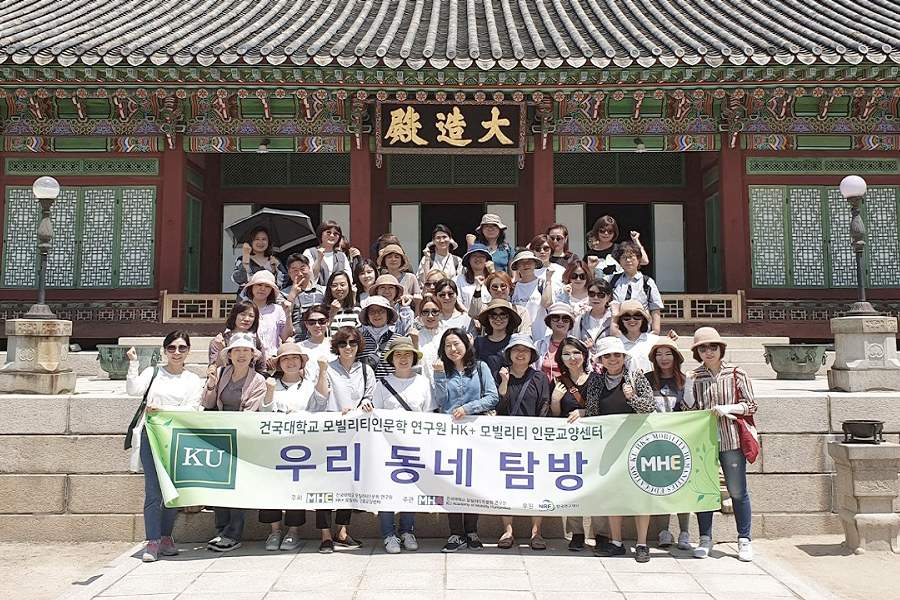
Our third visit to our neighborhood lasted from 10 to 12 am on May 24 (Fri), 2019. Under the theme of King’s Car in Changdeokgung Palace, it was time to look around Changdeokgung Palace (Donhwamun) → Injeongjeon → Seonjeongjeon→ Nagseonjae → Kyujanggak with Chan-woong Lim’s cultural heritage commentary.
Changdeok Palace, # 122 of the national historic site is the second palace of the Joseon Dynasty built after Gyeongbok Palace, the official royal palace of the Joseon Dynasty. Unlike Gyeongbok Palace, which is regularly placed in a plain place to symbolize the king’s authority, it represents the unique palace architecture and garden culture of the Joseon Dynasty.
Although the buildings at earlier times were destroyed by war and fire, the buildings that were built later show the history of the palace architecture of the Joseon Dynasty. The forests, trees, ponds, pavilions and flower beds are fantastic harmonies. It is a place to be.
Donhwamun as the main gate of Changdeokgung Palace, and Injeongjeon as the symbol of Changdeok Palace were first built during the Taejong period and then turned into ashes three times by the Japanese invasion, Imjinwuiran, and fire. It was built again the fourth time in 1804 and continues until today.
Seonjeongjeon was the site where the affairs of the dynasty used to be discussed as the only place in Changdeokgung where the roof was covered with blue tile. Since the blue tile was very expensive, the blue tile was covered only on Seonjeongjeon where the king did the public affairs, and afterwards it was used as the temple, a place where the mortuary tablets of the deceased kings and queens were gathered.
At the eastern end of the palace, there is a building called Naksonjae, which is a space reserved for the concubine by King Hyeonjong.
King Youngchin, who was the last prince of the emperor and never reigned as a king, used to stay in Naksonjae. King Youngchin, the seventh son of King Gojong, was taken to Japan as a pawn and was educated in Japanese style. He was married to a Japanese royal family. After he returned from Japan in 1963, he lived and died here.
It was a valuable time to see what changes were happening in the palace at that time, looking at the way of new artifacts and new architectural changes in Changdeokgung, where King Sunjong’s car used to be parked.
On May 31 (Fri), a 4th visit will be finalized and finished with visiting to the site of the May 1st Independence Movement Protest 100 years ago.


